Glauber Rocha was a Brazilian filmmaker and one of the leading figures of the Cinema Novo movement, which emerged in Brazil in the 1960s.
His films are known for their political and social commentary, as well as their poetic and experimental style. Here are some of Glauber Rocha’s best films:
“Black God, White Devil” (1964) – A Western-inspired film that follows a peasant couple who become involved in a religious cult that encourages rebellion against the oppressive social order.
“Antonio das Mortes” (1969) – A political allegory set in the Brazilian countryside, which follows a hired killer who becomes disillusioned with his role in maintaining the status quo.
“Entranced Earth” (1967) – A surreal and experimental film that explores the tensions between tradition and modernity in Brazil, through the story of a mystical poet and a revolutionary leader.
“The Age of the Earth” (1980) – A poetic and experimental film that reflects on the history of Brazil and the struggle for social justice, through a series of vignettes and images.
Best Glauber Rocha Films
Glauber Rocha’s films are a testament to his visionary and daring approach to cinema, and his commitment to using film as a tool for social and political change.
Fans of experimental and politically engaged cinema are sure to appreciate his work.
1. Pátio (1959)
“Pátio” (English title: “The Yard”) is a 1959 Brazilian film directed by Glauber Rocha. The film follows the story of a group of inmates in a Brazilian prison who are forced to work in the yard, under the watchful eye of a sadistic warden.
The film is a powerful exploration of the dehumanizing effects of imprisonment, and the ways in which the prison system can reinforce existing power structures and inequalities.
Through its portrayal of the inmates, “Pátio” offers a searing indictment of Brazilian society at the time, which was marked by deep poverty, inequality, and political repression.
One of the key strengths of “Pátio” is its use of non-professional actors, many of whom were actual prisoners at the time of filming.
This lends the film a sense of gritty authenticity and helps to convey the harsh realities of life in the prison.
The film’s cinematography by Waldemar Lima is also notable, with its use of stark black and white imagery to capture the bleakness and despair of the inmates’ lives.
Overall, “Pátio” is a powerful and thought-provoking film that offers a searing critique of the Brazilian prison system and the society that creates and sustains it.
Despite being over six decades old, the film’s themes of inequality, injustice, and the dehumanizing effects of imprisonment remain relevant today.
- Total Inventory Of Five To Ten Million Items Featuring Comic Books; Magazines; Books; Brewermania;
- Calendars; Catalogs; CGC Graded Comics; Entertainment Memorabilia; Glass Including Chihuly; Fenton;
- Murano; Posters; Programs; Records; Reference Pubs; Sports Memorabilia; Toys; Trading Cards & More.
2. A Cruz na Praça (1959)
No poster available
“A Cruz na Praça” (1959) is a Brazilian drama film directed by Anselmo Duarte. The film tells the story of Tonho (played by Anselmo Duarte), a poor farmer who becomes a symbol of resistance against a corrupt and oppressive local government.
The film takes place in a small town in the Brazilian countryside, where the powerful and wealthy local officials are exploiting the poor farmers and workers.
When Tonho stands up to the authorities and refuses to comply with their demands, he becomes a target of their wrath and is forced to flee into the surrounding wilderness.
If you like Glauber Rocha’s work, on our sister site AuteurGraph we have a profile page, a visual film timeline, and a ratings page that gives a tonne of info and data about their career in a visualized form.
“A Cruz na Praça” is a powerful indictment of the corruption and inequality that was rampant in Brazilian society at the time, and is notable for its raw and unflinching portrayal of the struggles of the rural poor.
The film features strong performances by its lead actors, including Anselmo Duarte in the lead role, and was praised for its gritty realism and social commentary.
The film was a critical and commercial success in Brazil and is now considered a classic of Brazilian cinema. It won the Palme d’Or at the 1959 Cannes Film Festival, making it the first Brazilian film to win the prestigious award.
3. Black God, White Devil (1964)
“Black God, White Devil” (Portuguese: Deus e o Diabo na Terra do Sol) is a Brazilian film directed by Glauber Rocha and released in 1964.
It is widely regarded as one of the most important and influential films of Brazilian Cinema Novo, a movement of socially and politically engaged filmmaking that emerged in Brazil during the 1960s.
The film tells the story of a poor farmer named Manuel who kills his boss after being mistreated and then goes on the run with his wife Rosa, seeking refuge with a charismatic bandit leader named Sebastião.
Along the way, they encounter a variety of characters, including a messianic preacher and a corrupt landowner, and become embroiled in a series of conflicts and power struggles.
“Black God, White Devil” is notable for its striking visual style, which combines elements of surrealism and neo-realism to create a unique and powerful cinematic experience.
The film is also noted for its political commentary, which critiques the corrupt and oppressive social and economic conditions of rural Brazil, and its exploration of themes such as religion, violence, and the struggle for power.
Overall, “Black God, White Devil” is a powerful and thought-provoking film that remains relevant and influential to this day.
It is a must-see for anyone interested in Brazilian cinema, political filmmaking, or the history of world cinema.
4. Amazonas, Amazonas (1965)
No poster available
Amazonas, Amazonas is a 1965 Brazilian drama film directed by Geraldo Sarno. The film tells the story of a group of rubber tappers in the Amazon rainforest who rebel against their exploitative bosses and fight for their rights and freedom.
The film is notable for its raw and realistic portrayal of life in the Amazon rainforest, and for its exploration of themes of social justice, resistance, and the struggle for dignity and human rights.
The film features strong performances from its cast of non-professional actors, who bring a sense of authenticity and urgency to their roles.
Amazonas, Amazonas is considered a landmark of Brazilian cinema and a classic of the Cinema Novo movement, which sought to bring social and political issues to the forefront of Brazilian cinema.
The film is also notable for its stunning cinematography, which captures the beauty and harshness of the Amazon rainforest, and for its powerful score, which adds to the film’s emotional impact.
Overall, Amazonas, Amazonas is a powerful and moving film that offers a glimpse into the lives of those who have been marginalized and exploited in the Amazon rainforest.
It is a must-watch for fans of Brazilian cinema and anyone interested in films that address social and political issues with honesty and passion.
5. Maranhão 66 (1966)
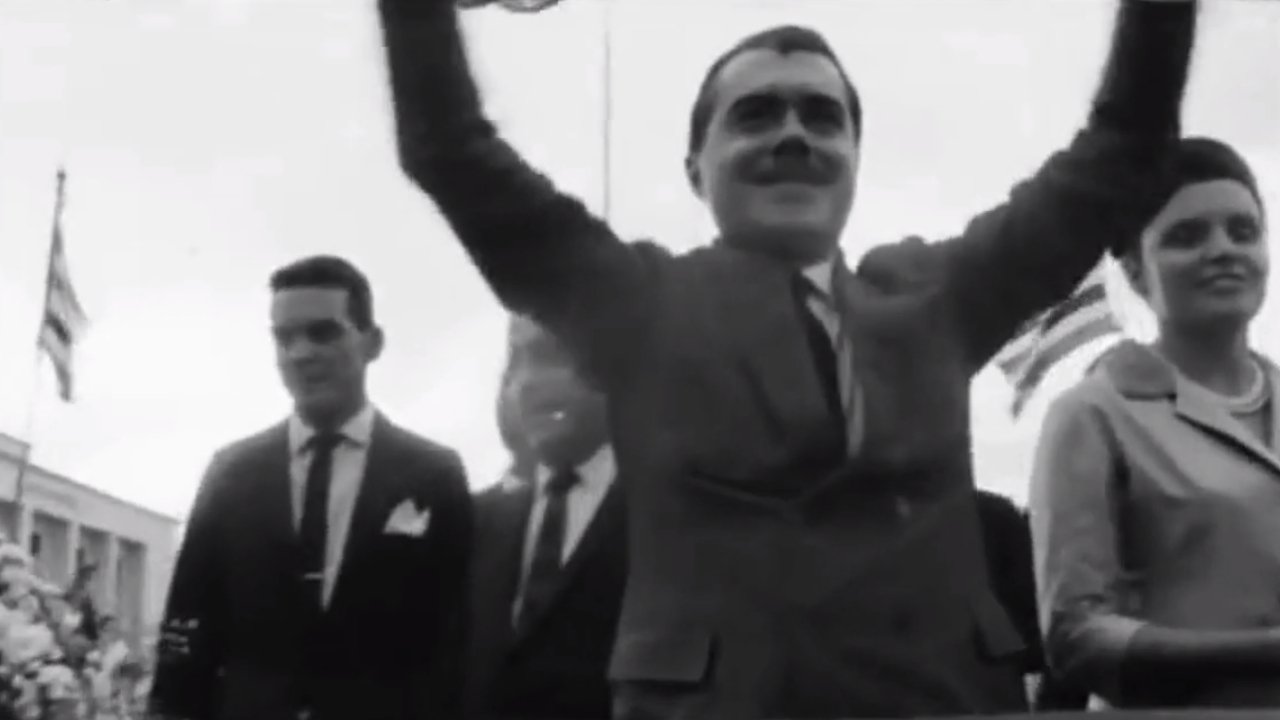
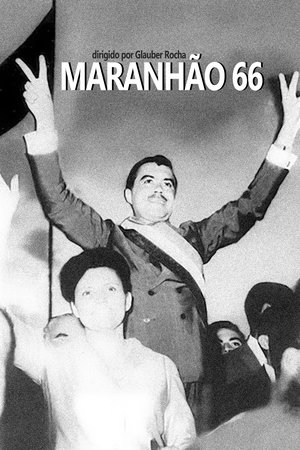
Maranhão 66
1966 • 0h 11min • ★ 6.7/10 • Brazil
Directed by: Glauber Rocha
Cast: José Sarney
A report on Sarney's inauguration as the governor of the Maranhão state. His promises are heard alongside images of the grim reality.
“Maranhão 66” is a short film directed by Glauber Rocha and released in 1966. The film is part of the “Cinco Vezes Favela” (Five Times Favela) anthology, which showcases the work of five emerging Brazilian filmmakers.
“Maranhão 66” tells the story of a young couple from a poor neighborhood in Rio de Janeiro, who dream of leaving their poverty-stricken existence and moving to the northeastern state of Maranhão. The film explores themes of poverty, social inequality, and the yearning for a better life.
While “Maranhão 66” is one of Glauber Rocha’s lesser-known works, it is notable for its striking visual style and its powerful social message.
The film captures the spirit of the Cinema Novo movement, which sought to use film as a tool for political and social change, and showcases Rocha’s ability to create thought-provoking, socially engaged cinema.
Overall, “Maranhão 66” is a powerful and affecting film that provides a window into the realities of life for the poor in Brazil.
Fans of Brazilian cinema and socially engaged filmmaking may appreciate this lesser-known gem from Glauber Rocha’s oeuvre.
6. Entranced Earth (1967)
“Entranced Earth” (Portuguese title: “Terra em Transe”) is a 1967 Brazilian film directed by Glauber Rocha.
The film is set in a fictional South American country, and follows the story of Paulo Martins, a journalist and political activist who becomes involved in a power struggle between two political factions.
The film is notable for its bold visual style and experimental approach to storytelling, which incorporates elements of surrealism and political satire.
Rocha uses a variety of techniques, including rapid editing, jump cuts, and nonlinear narrative to create a sense of disorientation and political unrest.
“Entranced Earth” is a complex and multi-layered film that explores a wide range of themes, including colonialism, nationalism, and the struggle for political power.
Through its portrayal of Paulo Martins, the film offers a critique of political activism and the role of the intellectual in political struggles.
One of the key strengths of “Entranced Earth” is its stunning cinematography by Luiz Carlos Barreto and Edgar Moura, which captures the beauty and chaos of the fictional country, as well as the emotional turmoil of the characters.
Overall, “Entranced Earth” is a challenging and thought-provoking film that demands careful attention from the viewer. Its innovative visual style and complex themes make it a landmark of Brazilian cinema, and a testament to Glauber Rocha’s vision as a filmmaker.
- Entranced Earth ( Terra em Transe ) ( Anguished Land )
- Entranced Earth
- Terra em Transe
- Anguished Land
- Jardel Filho, Paulo Martins (Actors)
7. 1968 (1968)
“1968” (1968) is a French documentary film directed by Chris Marker. The film is a meditation on the political and cultural upheavals of 1968, a year of social and political revolution that saw widespread protests, demonstrations, and unrest across the world.
The film is composed of a series of still images and news footage, as well as interviews with activists, students, and others who were involved in the various protests and movements of the time.
The film explores the themes of youth rebellion, anti-authoritarianism, and the struggle for social justice and equality.
“1968” is an important work of political cinema, and is notable for its innovative use of still images and its collage-like structure.
The film has been praised for its thought-provoking and insightful exploration of the events of 1968, and its influence can be seen in many subsequent works of documentary filmmaking.
The film was well-received by critics and audiences upon its release, and is now considered a classic of French cinema and an important historical document of the tumultuous year of 1968.
- Kurlansky, Mark (Author)
- English (Publication Language)
- 480 Pages - 01/11/2005 (Publication Date) - Random House Trade Paperbacks (Publisher)
8. Antonio das Mortes (1969)
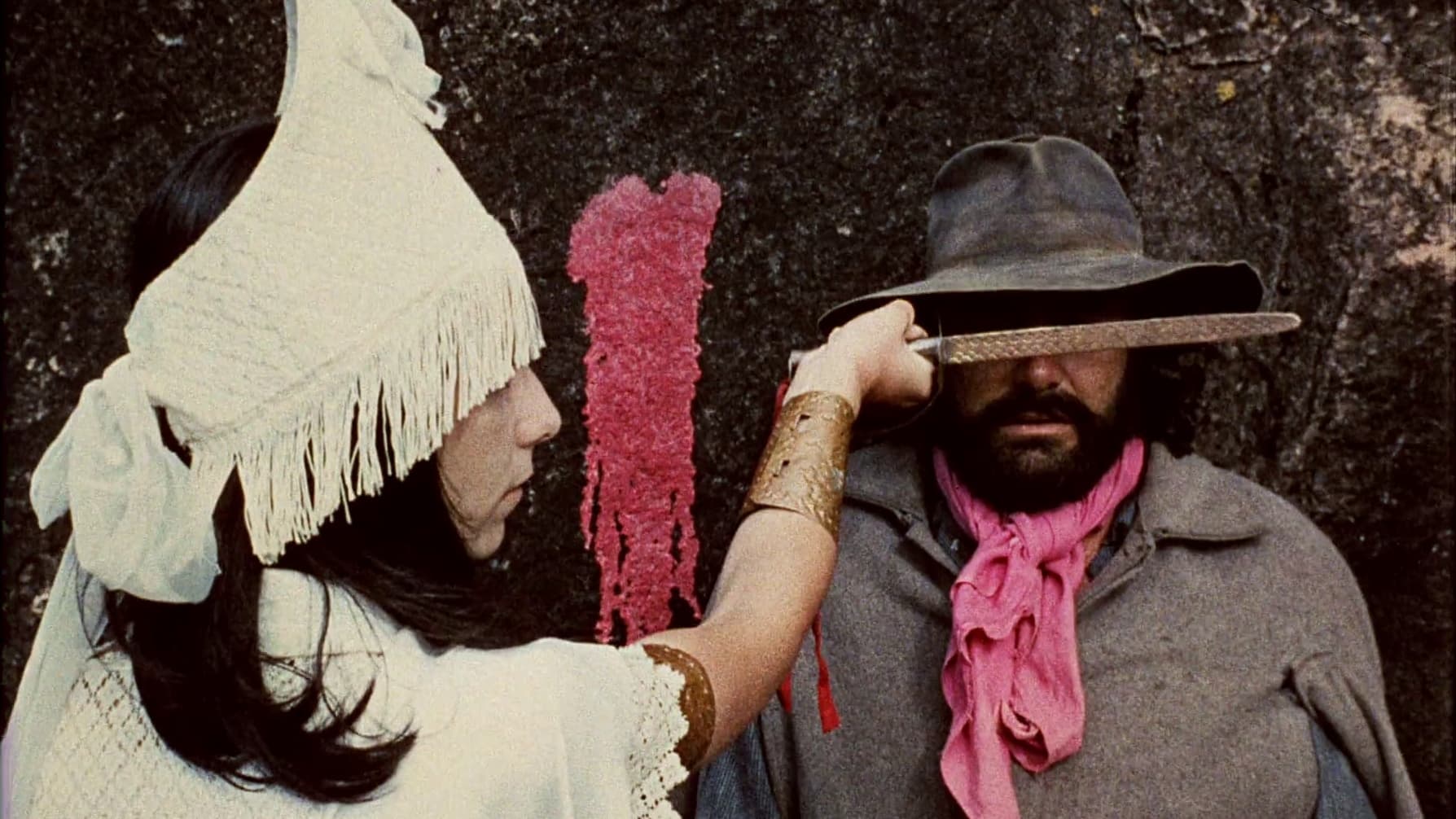
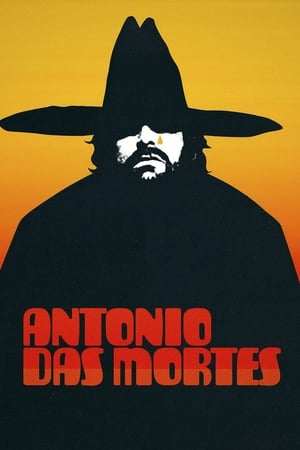
Antonio das Mortes
1969 • 1h 40min • ★ 6.9/10 • Germany
Directed by: Glauber Rocha
Cast: Maurício do Valle, Odete Lara, Othon Bastos, Jofre Soares, Lorival Pariz
A new incarnation of Cangaceiro bandits, led by Coirana, has risen in the badlands. A blind landowner hires Antônio to wipe out his old nemesis. Yet after besting Coirana and accompanying the dying man to his mountain hideout, Antônio is moved by the plight of the Cangaceiro’s followers. The troubled hitman turns revolutionary, his gun and machete aimed towards his former masters.
“Tatu Bola” is a Brazilian film directed by Geraldo Sarno and released in 1973. The film tells the story of a young boy named Tonho who lives in a small village in the Brazilian countryside.
Tonho becomes fascinated with a rare species of armadillo called the tatu bola, which he learns is on the verge of extinction due to hunting and deforestation.
As Tonho becomes more and more obsessed with the tatu bola, he begins to see it as a symbol of his own struggles against the forces of modernity and progress that are threatening his way of life.
He joins forces with a group of conservationists who are trying to save the tatu bola from extinction, and together they embark on a mission to protect the armadillo and preserve the natural beauty of their homeland.
“Tatu Bola” is notable for its beautiful cinematography and its strong ecological message. The film is a powerful critique of the destructive impact of modernization and industrialization on traditional ways of life and the natural environment.
It is also a celebration of the resilience and determination of rural communities who are fighting to preserve their cultural heritage and protect the natural world around them.
Overall, “Tatu Bola” is an important and inspiring film that remains relevant to this day. It is a must-see for anyone interested in environmental issues, cultural preservation, or Brazilian cinema.
9. Tatu Bola (1971)
“Tatu Bola” (1971) is a Brazilian drama film directed by J.B. Tanko. The film tells the story of a young boy named Tatu (played by Mazzaropi), who is raised by his grandfather in the countryside of São Paulo.
Tatu is a simple and kind-hearted boy who loves to play soccer, but his grandfather disapproves of his interest in the sport, believing that it is a frivolous pastime that distracts him from his duties on the farm.
However, Tatu’s love of soccer leads him to meet a group of other young players, and together they form a team and compete in local tournaments.
“Tatu Bola” is a heartwarming and humorous film that celebrates the joys of childhood and the importance of following one’s dreams.
The film is notable for its portrayal of rural Brazilian life, and for its depiction of the close-knit communities that often form in small towns and villages.
The film was a commercial success in Brazil, and is now considered a classic of Brazilian cinema. It remains a beloved and nostalgic film for many Brazilians, and is remembered for its simple and charming portrayal of the Brazilian countryside and its people.
- Hardcover Book
- Ducarmo Paes (Author)
- Portuguese Brazilian (Publication Language)
- 01/01/2014 (Publication Date) - Editora (Publisher)
10. Der Leone Have Sept Cabeças (1970)
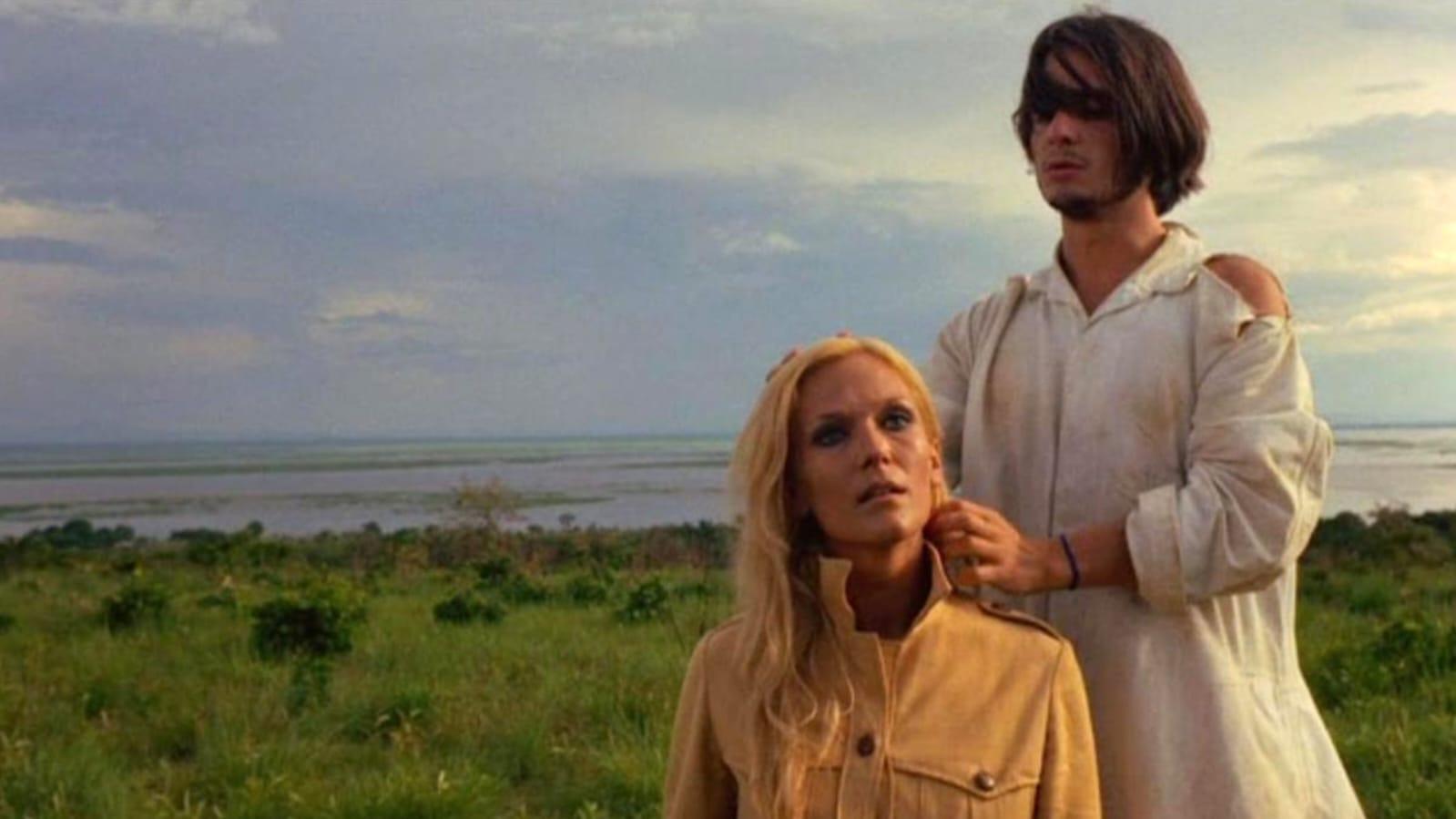
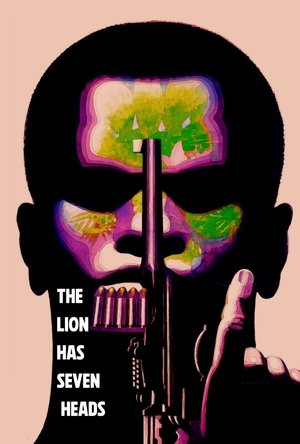
The Lion Has Seven Heads
1971 • 1h 43min • ★ 6.13/10 • Brazil
Directed by: Glauber Rocha
Cast: Rada Rassimov, Jean-Pierre Léaud, Giulio Brogi, Hugo Carvana, Gabriele Tinti
A white-robed preacher wanders and sermonizes across African lands; European communists and CIA spies conspire out of mutual self-interest to engineer the appointment of an African bourgeois to a puppet government presidency; and a revolutionary group marches in exile.
Der Leone Have Sept Cabeças (The Lion Has Seven Heads) is a 1970 Brazilian drama film directed by Glauber Rocha.
The film follows a man named Antônio das Mortes, a legendary mercenary and killer who is hired by a wealthy landowner to quell a rebellion by poor farmers in the Brazilian sertão.
The film is notable for its striking visual style, its use of religious and mythological imagery, and its exploration of themes of power, violence, and resistance.
The film features powerful performances from its cast, including Maurício do Valle as Antônio das Mortes and Odete Lara as the landowner’s wife.
Der Leone Have Sept Cabeças is considered a classic of Brazilian cinema and a masterpiece of the Cinema Novo movement, which sought to bring social and political issues to the forefront of Brazilian cinema.
The film is also notable for its innovative use of sound and music, which adds to its hypnotic and otherworldly atmosphere.
Overall, Der Leone Have Sept Cabeças is a powerful and thought-provoking film that offers a searing critique of power and violence in Brazilian society.
It is a must-watch for fans of Brazilian cinema and anyone interested in films that push the boundaries of storytelling and visual expression.
11. Câncer (1972)
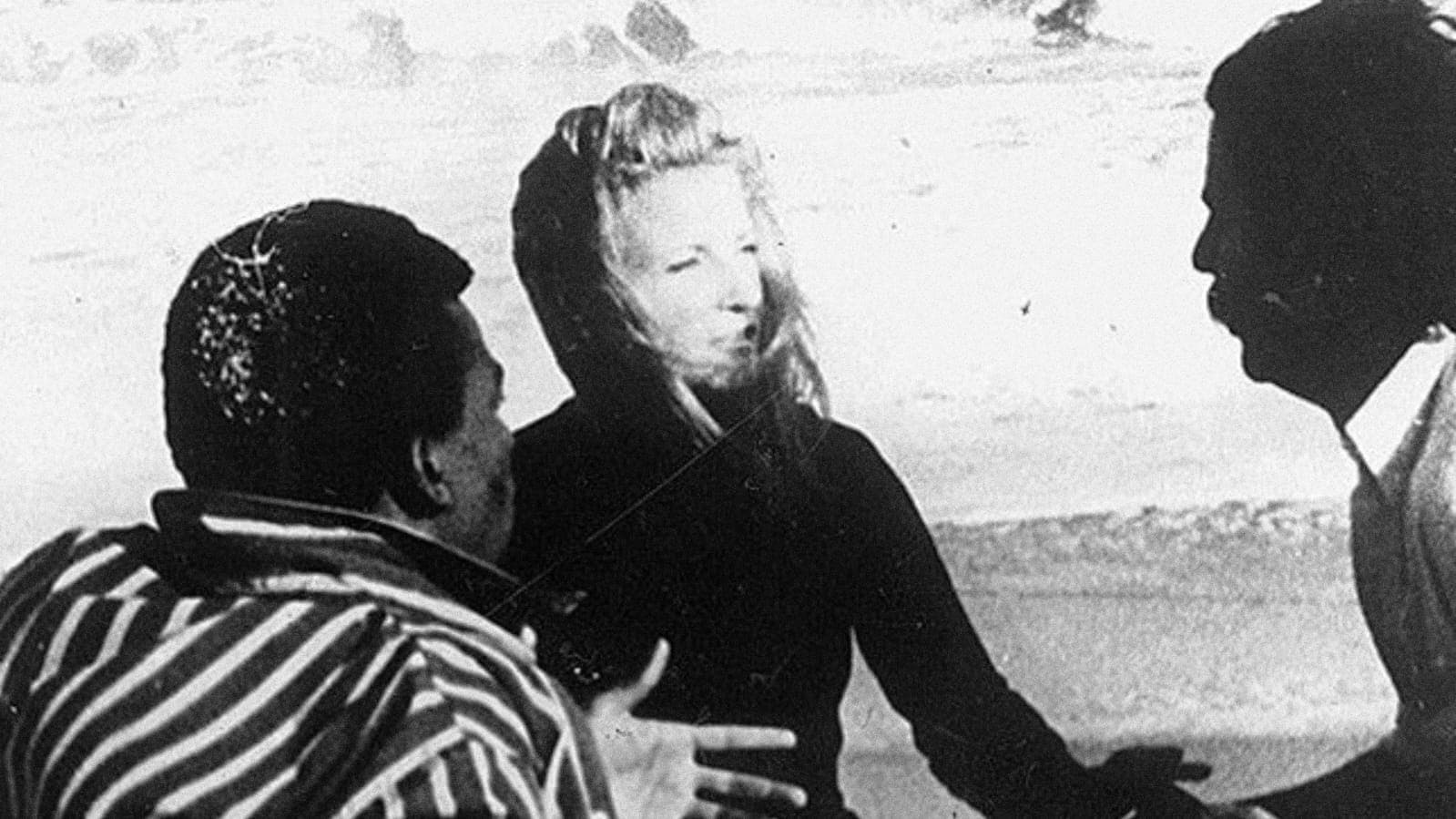
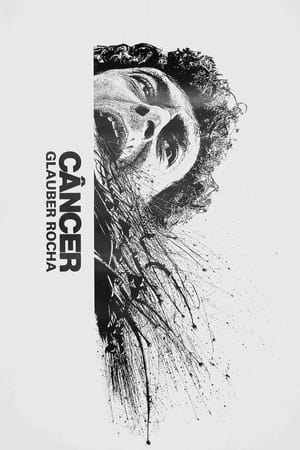
Câncer
1972 • 1h 26min • ★ 8/10 • Brazil
Directed by: Glauber Rocha
Cast: Hugo Carvana, Antônio Pitanga, Odete Lara, Eduardo Coutinho, Hélio Oiticica
This film shows people with constant psychological and social conflicts: the violence among outlaws, conflicts between man and woman, police and society.
“Câncer” (English title: “Cancer”) is a drama film directed by Glauber Rocha and released in 1972. The film is a poetic and experimental exploration of the themes of illness, death, and the human condition.
The film follows a woman who has been diagnosed with cancer, and her journey through the physical and emotional trials of the disease.
The film’s dreamlike imagery and abstract narrative style create a haunting and deeply affecting work that challenges viewers to confront the fragility of life and the inevitability of death.
“Câncer” is an example of Glauber Rocha’s innovative and daring approach to filmmaking, as well as his commitment to exploring the most fundamental questions of human existence.
While the film may not be for everyone, those who appreciate experimental and thought-provoking cinema may find it to be a deeply moving and unforgettable work of art.
Overall, “Câncer” is a testament to Glauber Rocha’s artistic vision and his place as one of the most important filmmakers in Brazilian cinema history.
12. História do Brasil (1973)
No poster available
História do Brasil
1973 • 2h 46min • ★ 6.3/10 • Brazil
Directed by: Glauber Rocha
Cast: Jirges Ristum
The film, created in exile from 1971 to 1973 between Cuba and Rome, is considered a "semi-finished" work by Glauber Rocha. It has a certain pedagogical character and seeks, through dialectical editing, to conduct a critical review of colonization, class struggle, messianism, and the establishment of populist governments in the Third World. There is a chronology in the events presented, which, supported by extensive iconography (films, engravings, photos, etc.), create "free" associations that allow the viewer a "polyphonic" view of the "History of Brazil."
“História do Brasil” (English title: “Brazilian History”) is a 1973 Brazilian film directed by João Batista de Andrade.
The film is a historical drama that traces the history of Brazil from the arrival of the Portuguese in the 16th century to the end of the military dictatorship in the early 1980s.
Through its sweeping narrative, “História do Brasil” explores the social, political, and economic forces that shaped Brazil over the centuries.
The film incorporates a range of historical events and figures, including the indigenous resistance to colonialism, the African slave trade, the rise of Brazilian nationalism, and the struggles for democracy during the military dictatorship.
One of the key strengths of the film is its commitment to historical accuracy, with meticulous attention to detail in the costume design, set decoration, and overall production design.
The film also features a strong ensemble cast, including Othon Bastos, Paulo César Pereio, and Jofre Soares.
“História do Brasil” is a powerful exploration of Brazilian history that sheds light on the country’s complex and often troubled past.
Through its nuanced portrayal of historical events and figures, the film offers a deep understanding of the forces that have shaped Brazil’s society and culture over the centuries.
- Otaíza de Oliveira Romanelli (Author)
- Portuguese Brazilian (Publication Language)
- 07/13/2025 (Publication Date) - Vozes (Publisher)
13. As Armas e o Povo (1975)
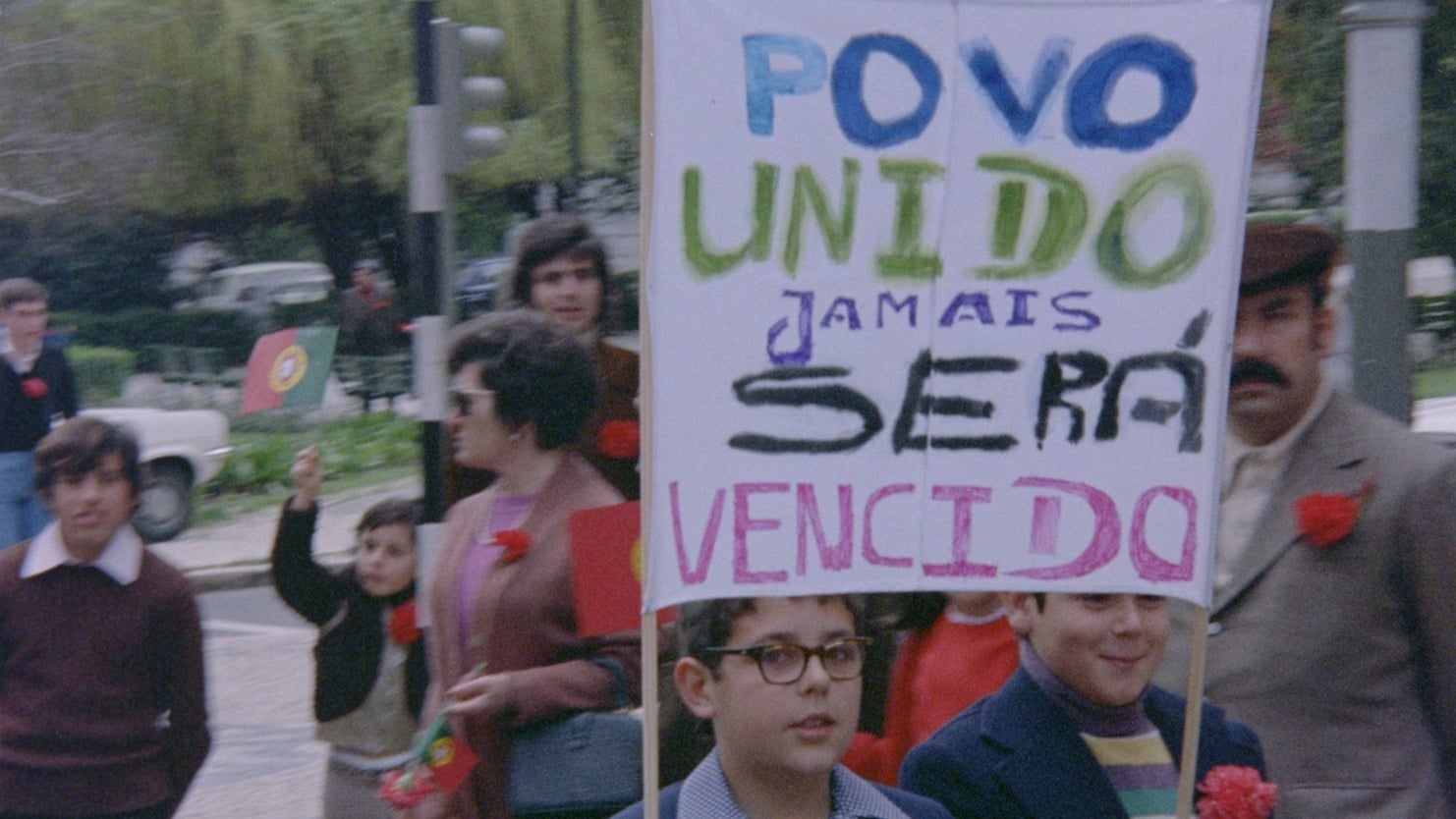
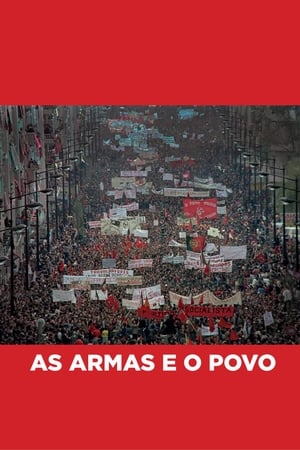
As Armas e o Povo
1975 • 1h 22min • ★ 7.3/10 • Portugal
Directed by: Moedas Miguel
Cast: Glauber Rocha, Adelino Gomes, Fernando Balsinha, Júlio Isidro, Mário Soares
Film directors with hand-held cameras went to the streets of Lisbon from April 25 to May 1, 1974, registering interviews and political events of the Portuguese "Carnations Revolution", as that period would be later known.
“As Armas e o Povo” (1975) is a Brazilian documentary film directed by Geraldo Sarno. The film examines the role of armed struggle in the Brazilian peasant movements of the 1960s and 1970s, and explores the lives and struggles of the rural poor in Brazil.
The film features interviews with members of various peasant movements, including the Ligas Camponesas (Peasant Leagues) and the Movimento dos Trabalhadores Rurais Sem Terra (Landless Rural Workers Movement), and presents a powerful critique of the Brazilian government’s policies towards the rural poor.
“As Armas e o Povo” is a poignant and powerful portrayal of the struggles of the rural poor in Brazil, and is notable for its unflinching portrayal of the violence and oppression that they faced.
The film features stunning footage of the Brazilian countryside and its people, and is a testament to the courage and resilience of those who fought for their rights and their dignity.
The film was well-received by critics and audiences in Brazil, and is now considered a classic of Brazilian cinema.
It remains an important work of political cinema, and is a powerful reminder of the struggles that continue to be faced by the rural poor in Brazil and around the world.
14. Claro (1975)
“Claro” (English title: “Of Course”) is a drama film directed by Glauber Rocha and released in 1975. The film tells the story of a young woman named Ana, who is struggling to come to terms with the death of her father and the disintegration of her family.
As Ana navigates the complexities of her grief, she becomes involved in a political movement that seeks to challenge the oppressive social order in Brazil.
The film’s themes of social and political struggle are interwoven with Ana’s personal journey, creating a powerful and affecting work that explores the intersections between personal and political transformation.
“Claro” is notable for its poetic and experimental style, as well as its use of dreamlike imagery and symbolism to explore the film’s themes.
The film also showcases Glauber Rocha’s skill as a director, as he guides the film’s complex narrative and draws nuanced performances from the cast.
Overall, “Claro” is a deeply affecting and thought-provoking film that speaks to the power of personal and collective transformation. Fans of Brazilian cinema and socially engaged filmmaking may appreciate this powerful and innovative work from Glauber Rocha.
- Crespo, Angel (Author)
- Spanish (Publication Language)
- 110 Pages - 07/12/1978 (Publication Date) - Publicaciones Porvivir Independiente (Publisher)
15. Cutting Heads (1970)


Cutting Heads
1970 • 1h 34min • ★ 4.3/10 • Brazil
Directed by: Glauber Rocha
Cast: Francisco Rabal, Pierre Clémenti, Marta May, Rosa Maria Penna, Emma Cohen
In a castle, somewhere in the Thirld World, Diaz is delirious, dreaming of the power he had in Eldorado, while oppressing the indians, workers and peasants. He is well aware of the menace his old victims represent, while a miracle-making shepherd fascinates and frightens him. Diaz finds a countrywoman, symbol of purity, and prepares a ceremony in his castle resembling his own funeral.
“Cutting Heads” (Portuguese title: “Cabra Marcado para Morrer”) is a 1970 Brazilian film directed by Eduardo Coutinho. The film tells the story of João Pedro Teixeira, a peasant and rural labor organizer who was assassinated by right-wing military forces during Brazil’s military dictatorship.
The film is structured as a documentary-fiction hybrid, blending elements of traditional documentary filmmaking with staged reenactments of key events in João Pedro’s life.
The film also incorporates interviews with his family, friends, and fellow activists, providing a rich and multifaceted portrait of a man whose life and death came to symbolize the struggle for social justice in Brazil.
One of the key strengths of “Cutting Heads” is its deeply humanistic approach to storytelling, with Coutinho showing a deep compassion for his subjects and a commitment to understanding the social and political context in which they live.
Through its focus on João Pedro and his community, the film offers a powerful critique of the inequalities and injustices that continue to plague Brazilian society.
Despite being made over 50 years ago, “Cutting Heads” remains a powerful and resonant work that speaks to the ongoing struggles for social justice and human rights in Brazil and beyond.
16. Di Cavalcanti (1977)
“Di Cavalcanti” is a biographical film directed by Glauber Rocha and released in 1977. The film tells the story of the life and work of Brazilian painter Emiliano Di Cavalcanti, one of the leading figures of the Brazilian modernist movement.
The film combines archival footage, interviews, and dramatizations to create a portrait of Di Cavalcanti’s life and art, exploring his influences, his struggles, and his impact on Brazilian culture.
Through the film, Glauber Rocha seeks to pay homage to a great Brazilian artist and to explore the complexities of the artistic and cultural scene in Brazil during the first half of the 20th century.
“Di Cavalcanti” is notable for its innovative use of different film techniques, including animation and experimental visual effects, to create a vivid and immersive portrait of the artist and his world.
The film also showcases Rocha’s love for Brazilian culture and his commitment to exploring the many facets of the Brazilian identity.
Overall, “Di Cavalcanti” is a visually stunning and thought-provoking film that pays tribute to a great Brazilian artist and explores the rich cultural history of Brazil.
Fans of Brazilian art and culture, as well as those interested in innovative and experimental filmmaking, may appreciate this unique and compelling work from Glauber Rocha.
- Ferreira Gullar (Author)
- Portuguese Brazilian (Publication Language)
- 07/13/2025 (Publication Date) - PINAKOTHEKE (Publisher)
17. Jorge Amado no Cinema (1979)
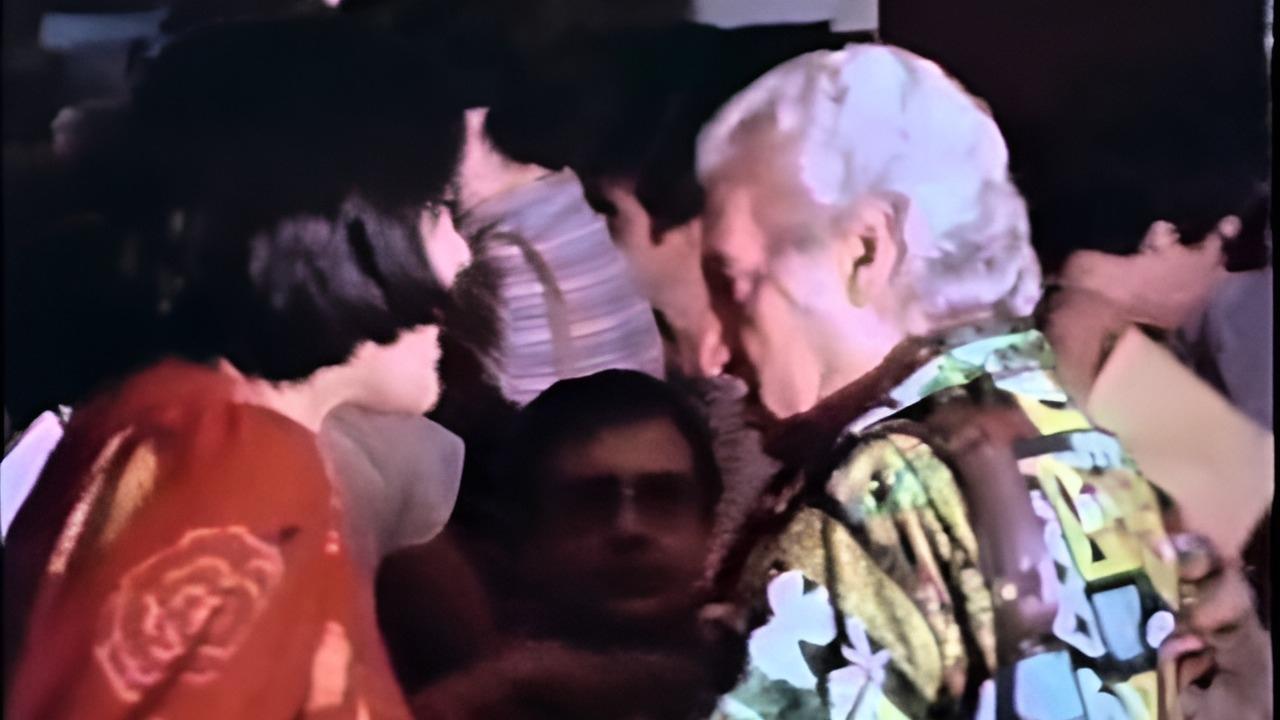
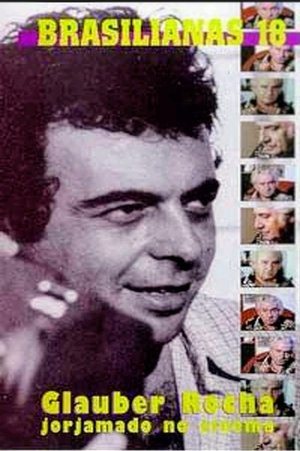
Jorge Amado no Cinema
1979 • 0h 37min • ★ 6/10 • Brazil
Directed by: Glauber Rocha
Cast: Jorge Amado, Zélia Gattai, Antônio Pitanga, Glauber Rocha, Luiz Carlos Barreto
Jorjamado no Cinema foi feito para um programa de televisão consagrado ao escritor Jorge Amado. Nesse documentário, Jorge Amado é filmado em sua casa, rodeado por sua numerosa família; numa livraria, durante uma sessão de autógrafos de um de seus livros, em um cinema em Salvador, na avant-première do filme Tenda dos Milagres, de Nelson Pereira dos Santos, adaptação do livro homônimo de Jorge Amado. Glauber filma seu amigo com muito humor e carinho. A câmera vai evoluindo lentamente, sem cessar e com rapidez sobre o escritor, seus familiares, atores e atrizes do filme de Nelson, além de passar por objetos de rituais de candomblé que constituem o museu de Jorge Amado.
“Jorge Amado no Cinema” (English title: “Jorge Amado in Cinema”) is a 1979 Brazilian documentary film directed by Geraldo Sarno.
The film explores the work of renowned Brazilian writer Jorge Amado and his influence on Brazilian cinema.
The film incorporates interviews with Amado, as well as with a range of Brazilian filmmakers and actors who have adapted his work for the screen.
Through these interviews, the film explores the themes and characters that have become synonymous with Amado’s writing, as well as the challenges and rewards of adapting his work for cinema.
One of the key strengths of “Jorge Amado no Cinema” is its celebration of the rich cultural heritage of Brazil and the importance of literature and film in shaping the country’s identity.
Through its exploration of Amado’s work, the film offers a deep understanding of the social and political issues that have shaped Brazil over the decades, including poverty, racism, and political corruption.
Overall, “Jorge Amado no Cinema” is a compelling and insightful documentary that sheds light on the enduring legacy of one of Brazil’s most beloved writers, and the ways in which his work continues to inspire and inform the country’s cultural and artistic landscape.
18. The Age of the Earth (1980)
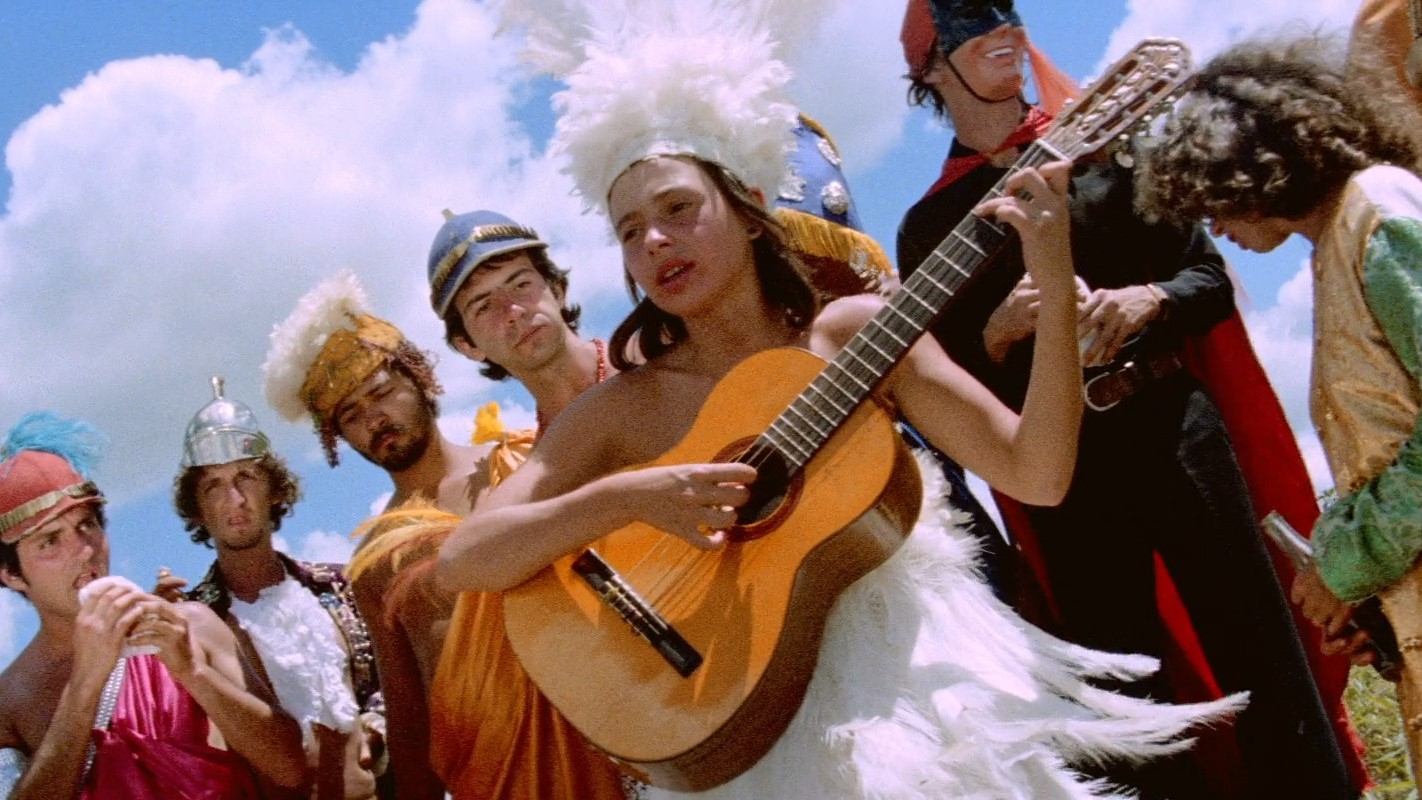
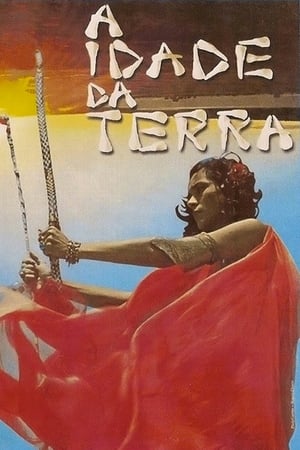
The Age of the Earth
1980 • 2h 28min • ★ 6.2/10 • Brazil
Directed by: Glauber Rocha
Cast: Maurício do Valle, Jece Valadão, Antônio Pitanga, Tarcísio Meira, Geraldo del Rey
Drawing inspiration from a poem penned by Castro Alves, this film vividly captures the political, cultural, and intellectual climate of Brazil during the late 1970s. At its core, the story revolves around four distinctive embodiments of Christ's image: a black man, a soldier, an Indian, and a guerrilla fighter. These courageous individuals, hailed as the harbingers of doom in the tupiniquim lands, valiantly combat the insatiable avarice and oppressive "civilizing" brutality propagated by the formidable John Brahms—a foreign exploiter devoid of morals.
“The Age of the Earth” (1980) is a Brazilian experimental film directed by Glauber Rocha. The film is a surreal and poetic exploration of Brazilian history, culture, and mythology, and is considered one of Rocha’s most ambitious and challenging works.
The film is divided into three parts, each of which explores a different aspect of Brazilian history and culture. The first part, “Creation,” is a mythic retelling of the creation of the world and the origins of Brazilian culture.
The second part, “Passion,” is a meditation on the history of Brazil, from the arrival of the Portuguese colonizers to the struggles of the modern era. The third part, “The Glorious Return of General Lazzaro,” is a surreal and chaotic exploration of the revolutionary spirit that animates Brazilian culture.
https://www.youtube.com/watch?v=kU5fV0tlsoY
“The Age of the Earth” is a complex and challenging film that defies easy categorization. The film is notable for its use of experimental techniques, including non-linear storytelling, dreamlike imagery, and a fragmented narrative structure.
The film features a diverse cast of characters, including indigenous people, peasants, intellectuals, and revolutionaries, and is a powerful and poetic expression of the Brazilian spirit.
The film was a critical success, and is now considered a masterpiece of Brazilian cinema. It remains an important work of experimental film, and a powerful exploration of the complexities and contradictions of Brazilian culture and history.
- Used Book in Good Condition
- Geological Museum. (Author)
- English (Publication Language)
- 07/12/1980 (Publication Date) - Stationery Office Books (Publisher)
3 Characteristics of Glauber Rocha Films
Here are three characteristics commonly found in Glauber Rocha’s films:
Political and Social Critique: Glauber Rocha was a politically engaged filmmaker who used his films to critique the social and political realities of Brazil.
His films often explore themes related to poverty, inequality, oppression, and resistance, and he was known for his commitment to creating a more just and equitable society through his art.
Poetic and Experimental Style: Glauber Rocha’s films are characterized by a poetic and experimental style that often incorporates dreamlike imagery, surrealism, and avant-garde techniques.
His films frequently employ nonlinear narratives, fragmented editing, and symbolic imagery to create a cinematic experience that is both visually striking and intellectually stimulating.
Brazilian Identity and Culture: Glauber Rocha was deeply committed to exploring and celebrating the complexities of Brazilian identity and culture through his films.
His works often draw on Brazilian history, folklore, and mythology to create a uniquely Brazilian cinematic language that speaks to the richness and diversity of Brazilian culture.
3 Reasons Why You Should Watch Glauber Rocha Films
Innovative cinematic style: Glauber Rocha was a pioneer of the Brazilian Cinema Novo movement, which sought to break free from traditional forms of filmmaking and explore new forms of expression.
His films feature a bold and innovative style that blends documentary and fiction techniques, using rapid cuts, handheld cameras, and surreal imagery to create a unique cinematic experience.
Social and political commentary: Rocha’s films are deeply rooted in the social and political realities of Brazil and Latin America, offering a critical commentary on issues such as poverty, racism, colonialism, and political corruption.
His films often depict the struggles of marginalized communities and the exploitation of the poor by those in power, making them both relevant and thought-provoking.
Artistic and cultural significance: Rocha’s films are considered to be some of the most important works in Brazilian and Latin American cinema, and have been widely acclaimed for their artistic and cultural significance.
His films have been featured in international film festivals and have influenced generations of filmmakers, both in Brazil and around the world.
Watching Glauber Rocha films provides a window into the rich and vibrant culture of Brazil, and offers an opportunity to explore the country’s complex history and social issues through the lens of one of its most visionary filmmakers.
Best Glauber Rocha Films – Wrapping Up
Glauber Rocha was a seminal figure in Brazilian cinema, and his films had a profound impact on the history of Brazilian culture and politics. His films were known for their experimental style, poetic imagery, and powerful political messages.
Here are some of Glauber Rocha’s most notable films:
“Black God, White Devil” (1964) – a film that explores the violent clash between two groups of peasants in the Brazilian countryside, and the rise of a messianic figure who promises to lead them to freedom.
“Antonio das Mortes” (1969) – a film that follows the journey of a hired gunman who is hired by the government to hunt down and kill a group of rebels who are fighting for land reform.
“The Age of the Earth” (1980) – a surreal and poetic exploration of Brazilian history, culture, and mythology.
“Entranced Earth” (1967) – a film that tells the story of a political campaign in a small town in Brazil, and the ways in which the campaign both exposes and reinforces the corruption and violence at the heart of Brazilian politics.
“Terra em Transe” (1967) – a film that explores the political and cultural tensions in Brazil during the 1960s, and the ways in which they were reflected in the country’s art, literature, and popular culture.
These films are all considered classics of Brazilian cinema, and are essential viewing for anyone interested in the history of Brazilian culture and politics.






![Entranced Earth (Terra em Transe) - (Mr Bongo Films) (1967) [DVD]](https://m.media-amazon.com/images/I/516eeIR1YCL.jpg)









